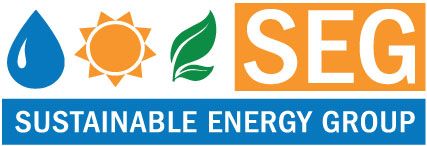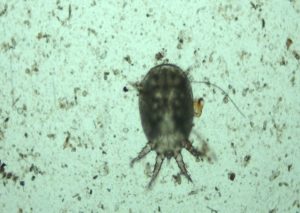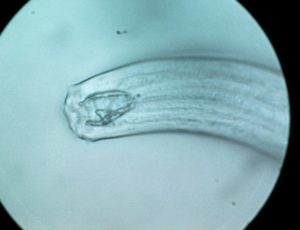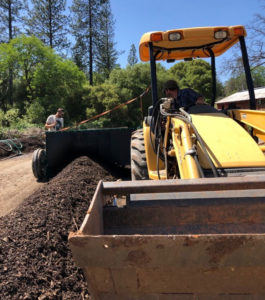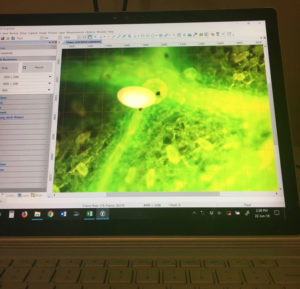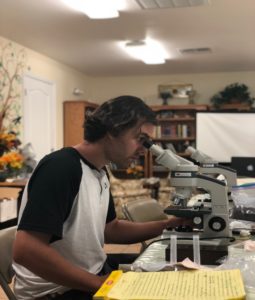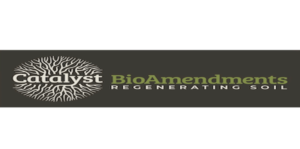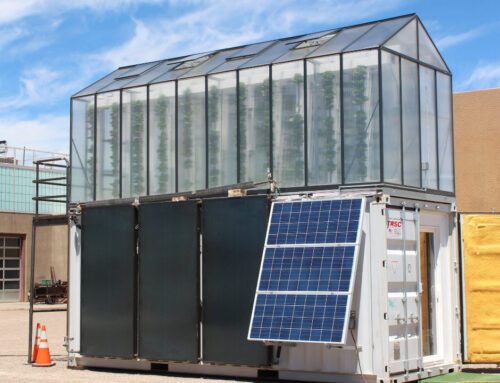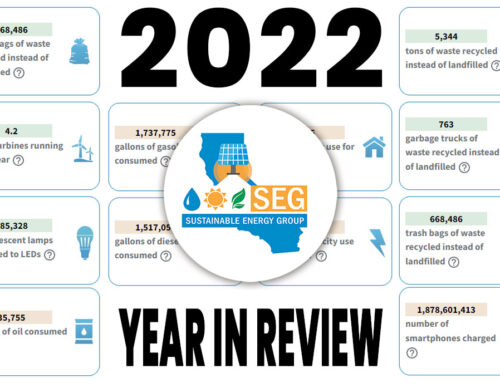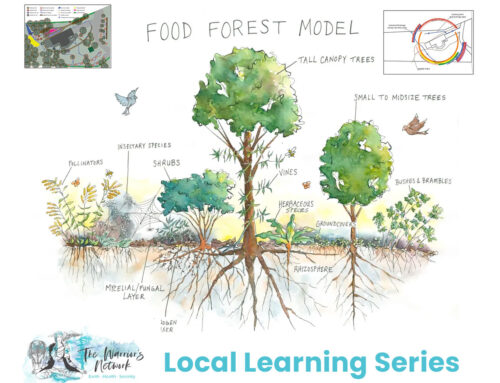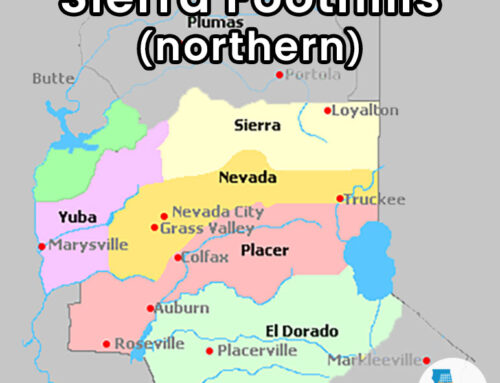By Keisha Wheeler, co-owner of Catalyst Bioamendments and Soil Foodweb Consultant in Nevada City, CA.
Microbes Instead of Chemicals for a Greener Lawn
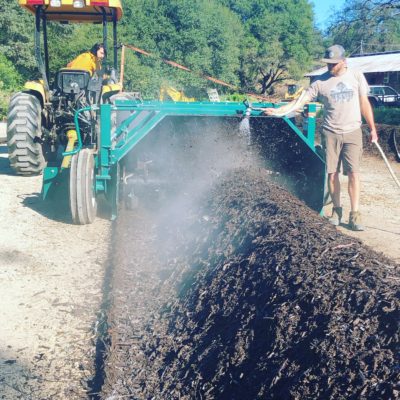


We all love a thick green carpet of grass under foot. For being the #1 most grown crop in North America, lawns have gotten a really bad reputation. Many homeowners feel the only option to obtaining a lush yard is to dump copious amounts synthetic fertilizers, fungicides, herbicides, and nematicides into the soil.
Try taking a different view on your yard. Think of lawns as small patches of grasslands, anchored into the soil with deep roots which provide a home for millions of species of beneficial soil microbes. These microbes will provide all the protection and nutrient the grass need while enabling the plant to protect itself from predation.
If the entire soil food web is re-established in our soils, we eliminate the need for synthetic chemicals. Replenishing the native microbes back into our own little spaces, regenerating the soils we have access to, is a very powerful way to effect change directly in our own lives.
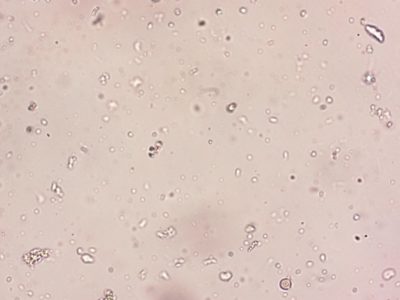


Depleted Soil under a Microscope
How does this relationship work exactly? Well, the plant knows exactly what nutrient it is looking for and which microbe can obtain it for them. Using a sort of barter system, the plant exudes sugars, synthesized from sunlight, and trades those sugars for different nutrients it needs.
We can help the plants take charge of their own needs by simply adding a diverse microbial population to the soil at the plants root zone. Bacteria, fungi, protozoa, nematodes, and micro-arthropods are all crucial to build a healthy soil ecosystem.
By offering the plants a diverse array of microbes we only need to assist them by watering and occasionally feeding the microbes until they grow into a thriving ecosystem which maintains itself.
As the microbial communities grow and really take hold in the soil, you will see an extreme change in root depth.
- Micro-arthropod
- Beneficial Nematode
As roots are able to grow deeper into the ground, they will have access to much more water which lessens the amount of time you need to keep your sprinklers on.
The goal here is to provide a space where microbes and plants can work symbiotically to unlock the plants highest genetic potential. When we accomplish this the benefits are numerous. Ridding our lives of toxic chemicals, creating a beautiful green space to enjoy, and taking personal responsibility of the grounds we inhabit all support healthy life in our community and on our planet.
How to biologically convert your own lawn:
- Find a source of really good compost (Catalyst has got you covered) complete with fungi, protozoa, and nematodes.
- Have the compost tested to ensure all the microbes you need are in the material and alive.
- Starting in the fall after the first rains, aerate your lawn like normal.
- After completing aeration distribute the compost over the lawn in its solid form or as a compost extract.
- Let the microbes do their job over winter.
- Have your soil biologically assessed to see how far progress has come along.
Here is an example soil/compost test by Catalyst:
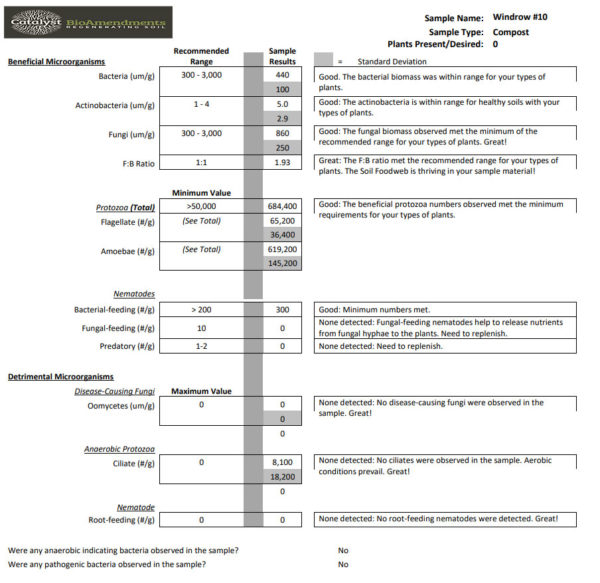


Test showing beneficial microorganisms and detrimental microorganisms.
Catalyst BioAmendments was started in 2018 in Nevada City, CA.
The four of us connected during a class held by Dr. Elaine Ingham and realized we had a very common goal, to regenerate as much soil as possible. We all understood that the first roadblock we would encounter is a lack of microbially rich material, so we set ourselves to the task of making the absolute best compost we possibly could. To do that we have to source ingredients that are free of chemicals and pesticides.
We learned that growing most of our own materials was the best solution, and second to that was using materials that are not commonly treated like brush chips from fire clearing.
- Turning Woodrow to Make Compost
- Microbial coverage on a leaf surface
- Greg sampling compost
It became apparent that there were many people trying to improve the microbial communities in their soils.
This gave us the idea that the best way to inoculate soils large scale is to help as many people as possible see what is in their soil and to transform it to its highest potential.
To do that we would need to help people see what was in their soil and in the compost they are buying. The result of that was the creation of Catalyst Labs. We accept soil, compost, compost tea and extracts for biological evaluation. We provide qualitative (quick check) and quantitative (actual count of microbes per gram of soil) analysis. We can also evaluate roots and leaf surfaces to assess microbial coverage. When all the surfaces are covered in beneficial microbes the disease-causing organisms cannot get in. This can be very helpful in disease prevention and pest management. We can provide compost and the education to help you convert your property over on your own, or we can provide you with tea and extract services.
For more information on our products please check www.catalystbioamendments.com.
To follow our photos, microbe videos, experiments, data sharing for all our of our piles follow us on Instagram @catalystbioamendments
—
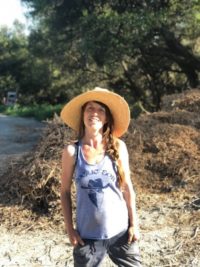

 About the Author; Keisha is a co-owner at Catalyst BioAmendments of Nevada City, California along with Casey, Gregory, and Zach. Keisha and Casey are Soil Foodweb Consultants who come from a regenerative agriculture background based out of Southern Ecuador.
About the Author; Keisha is a co-owner at Catalyst BioAmendments of Nevada City, California along with Casey, Gregory, and Zach. Keisha and Casey are Soil Foodweb Consultants who come from a regenerative agriculture background based out of Southern Ecuador.
All owners at Catalyst study with the Soil Foodweb School and have a deep love for microscopy. They are united by a mission to help beneficial soil microbes spread.
To find out more about the Soil Foodweb School, to see case studies, read peer reviewed studies, and articles published about the Soil Foodweb approach and Dr. Ingham’s work, please see www.soilfoodweb.com
If you want to really get some deeper understanding of soil microbiology, the USDA has published Dr. Ingham’s Soil Biology Primer for your reading pleasure on the NRCS page linked here: www.nrcs.usda.gov
